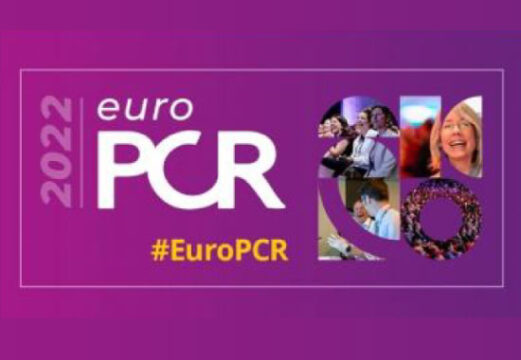TAVR is a valid alternative to treat failed surgical bioprosthetic valves, but one of its biggest challenges is patients with a small annulus. When using self-expanding valves, supra-annular implantation is recommended. However, at present, we only have retrospective, observational studies, not large enough. The LYTEN Trial is a randomized study in patients presenting failed bioprosthetic…
EuroPCR 2022 | Galileo Trial: Mortality Predictors after Successful TAVR
Patients undergoing TAVR are mostly older and more fragile, with comorbidities both cardiovascular and non-cardiovascular. Therefore, they are associated with thromboembolic and bleeding risk. This study looked mortality predictors after successful TAVR in the Galileo trial. Mortality at 248 days was 9.2%, 5.5% being of cardiovascular cause and 3.9% non-cardiovascular. Mortality predictors were age >85,…
EuroPCR 2022 | ASTRO TAVR: Should we treat post TAVR Strokes with Neurointervention?
The presence of stroke after TAVR has dropped and is currently at 2%; however, it is 5 times more deadly, has negatively affected quality of life and has increased healthcare costs. The ASTRO TAVI registry included 14 centers and 16615 TAVR procedures between 2006 y 2021. In this period, there were 484 neurological events within…
EuroPCR 2022 | Changes in Cardiac Damage after Surgical Aortic Valve Replacement
This study presented at EuroPCR 2022 analyzed the PARTNER study pool and included 1974 patients with a complete echocardiogram. Surgical risk was 17.3% extreme/inoperable, 54.3% intermediate and 28.4% low. 60% received transcatheter aortic valve replacement (TAVR) and the rest surgical aortic valve replacement (SAVR). 6.1% of patients were in stage 0 (no damage), 14.5% were…
Is High Mean Gradient After Edge-to-Edge Strategy Important?
Edge-to-edge treatment of the mitral valve is currently a valid alternative to surgery in cases of mitral regurgitation. Different studies have taken residual mitral regurgitation as a parameter of success, but little research has been conducted on the residual gradient once the procedure has been completed. What has been published is that a mean gradient…
Transcatheter Edge-To-Edge Repair Is Favorable for Elderly Patients at High Surgical Risk
Mitral valve prolapse is the most frequent cause of mitral valve regurgitation and is associated to hospitalization for cardiac failure and mortality. At present, the preferred treatment for operable patients is mitral valve surgical repair. Transcatheter edge to edge repair (TEER) has shown great benefit patients at high surgical risk; however, it has not been…
Is Increased Mitral Valve Gradient After MitraClip a Long-Term Prognostic Factor?
Transcatheter mitral valve repair using the edge-to-edge strategy has become a therapeutic alternative for patients with severe primary mitral valve regurgitation (MVG) who are at high or extreme surgical risk. However, both degree of residual regurgitation and gradient after the procedure should be taken into account, as in previous studies the latter was associated with…
Avatar Trial: Is It Time to Use Surgical Aortic Valve Replacement in Asymptomatic Patients?
It is still unclear whether surgical aortic valve replacement (SAVR) is beneficial in asymptomatic patients with severe aortic stenosis (AS) and conserved left ventricular function (C1 indication according to AHA guidelines). The European American guidelines only recommend intervention in asymptomatic patient when there is ventricular compromise (ejection fraction <50%, class I indication) or with a…
ACC 2022 | CLASP TR Study: Tricuspid Valve Repair with the PASCAL Device
The study included 65 patients who received endovascular treatment of the tricuspid valve with the PASCAL device. Forty-six completed the 12-month follow-up. At 1-year follow-up, the major events endpoint was 16.9%; the most frequent event was bleeding (9.2%). In addition, there were three cases of stroke, one reintervention, two vascular access complications, and five cardiovascular-related…
ACC 2022 | ADAPT-TAVR: Endoxaban Is Not Superior to DAPT After TAVR
DAPT-TAVR is a randomized trial that tested endoxaban in patients with no indication for anticoagulation who underwent successful transcatheter aortic valve replacement (TAVR) for symptomatic severe aortic stenosis. This study included 229 patients whose mean age was 80 years; 42% of them were male. Patients were randomized to either endoxaban 60 mg or 30 mg every 24 h or…
ACC 2022 | APOLLO
Lipoprotein a (Lp a) is an important risk factor for atherothrombosis and atherosclerotic cardiovascular disease, but it has no approved treatments to this day. The aim of this randomized study in phase 1 was to assess adverse events and siRNA tolerance (small interfering RNA) to reduce liver production of Lp a and assess plasma concentration…





